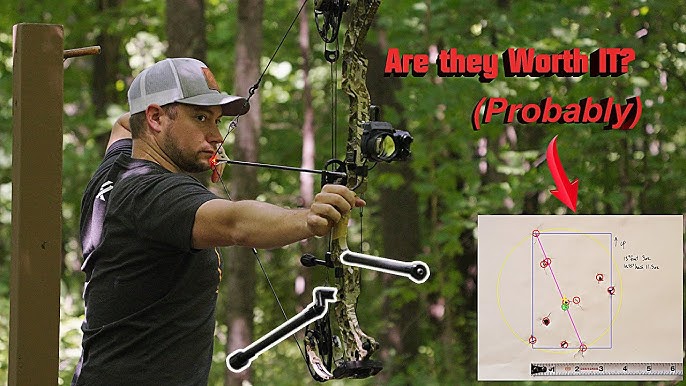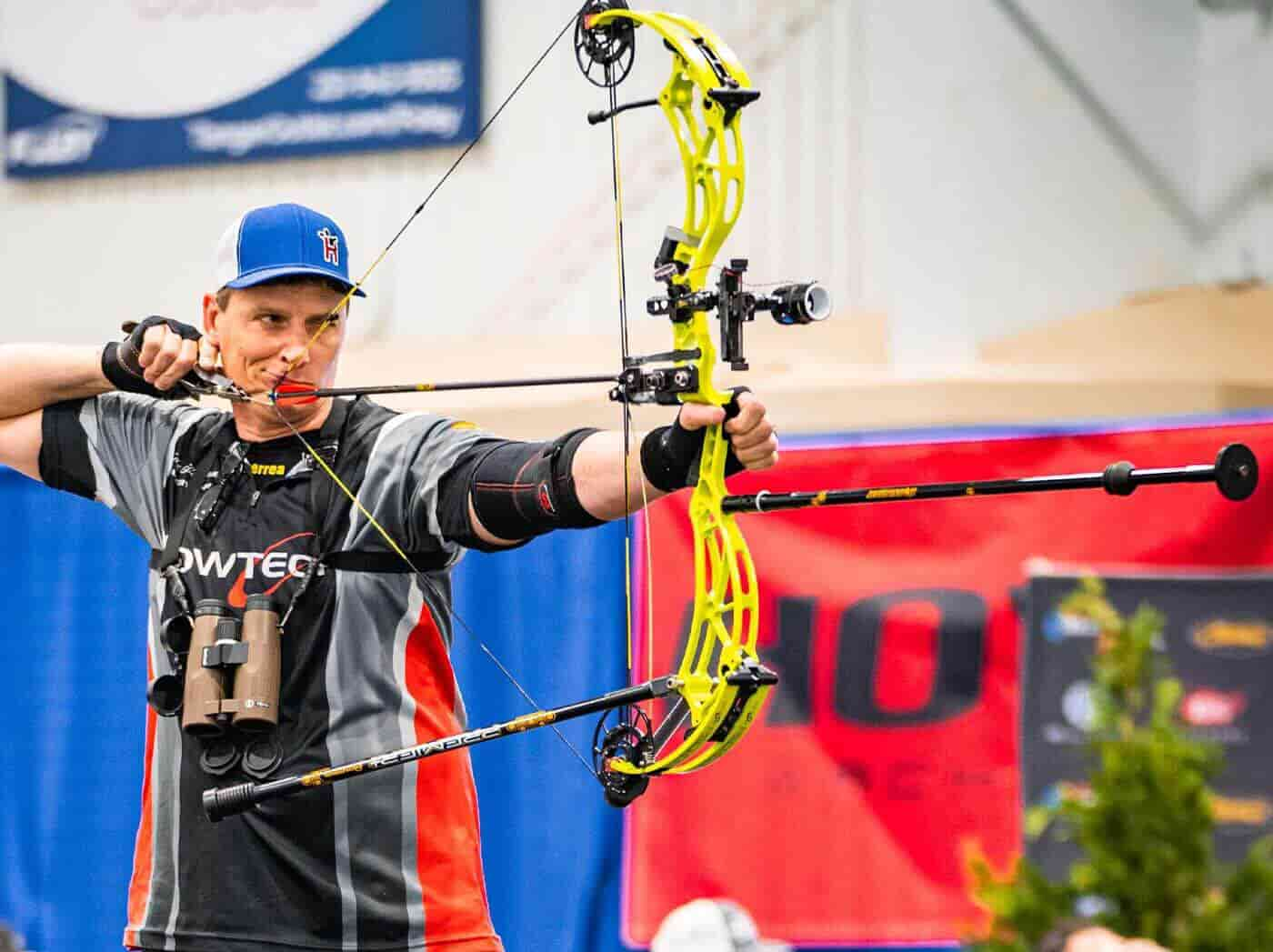Master the Art of Archery: Comprehending the Relevance of a Stabilizer in Your Configuration
Whether one is an experienced archer or just starting their journey, the significance of a stabilizer in their configuration can not be overemphasized. By recognizing the benefits of making use of a stabilizer, taking into consideration the ideal elements when selecting one, and properly installing and readjusting it, archers can elevate their skills to brand-new elevations.
The Role of a Stabilizer in Archery
A stabilizer plays a critical function in archery by improving equilibrium and reducing resonances throughout the shot. When an archer attracts the bowstring and releases it, there is a transfer of energy that can trigger the bow to shake. These resonances can adversely influence the precision of the shot. A stabilizer aids to neutralize these resonances by dissipating the energy and taking in.
One of the primary advantages of a stabilizer is its capability to boost balance. The weight of the stabilizer assists to distribute the weight uniformly, lowering the pressure on the archer's arm and improving stability.
Along with balance, a stabilizer additionally helps to lower torque. When an archer launches the bowstring, there is a natural propensity for the acquiesce rotate in the hand. This rotation, known as torque, can trigger the arrow to veer off-course. The weight and style of a stabilizer combat this rotation, making certain an extra exact and regular shot.
Advantages of Using a Stabilizer
The utilization of a stabilizer in archery supplies many benefits that enhance an archer's efficiency and total shooting experience. By soaking up and dampening these vibrations, the stabilizer enhances the stability of the bow, allowing for even more specific and regular shots.
Secondly, a stabilizer aids to balance the bow by including weight to the front end. This weight circulation counteracts the natural propensity of the acquiesce tip onward upon release, decreasing the amount of activity and boosting the archer's ability to keep aim on target.

Lastly, a stabilizer can also serve as a shock absorber, decreasing the shock and recoil experienced upon release. This not just improves the convenience of capturing however likewise minimizes the danger of injury or strain on the archer's body.
How a Stabilizer Improves Accuracy
Enhancing the precision of an archer's shots, a stabilizer plays a vital role in enhancing total efficiency. archery stabilizer. By adding security to the bow, a stabilizer aids minimize the unwanted movement and vibration that can happen during a shot. This reduction in activity permits the archer to preserve a consistent aim, resulting in more accurate and consistent shots

Furthermore, a stabilizer assists to wet vibrations that occur upon launch. These resonances can create the bow to shake, impacting the arrowhead's trajectory and precision. By absorbing and dissipating these resonances, a stabilizer assists to preserve the bow's stability and guarantee a smooth and exact shot.
Additionally, a stabilizer can likewise assist in stabilizing the weight distribution of the bow (archery stabilizer). By including weight to the front of the bow, a stabilizer assists to balance the weight of devices, such as sights or quivers, which might be connected to the bow. This well balanced weight distribution assists the archer maintain a regulated and constant capturing setting, causing boosted precision
Elements to Take Into Consideration When Choosing a Stabilizer
When choosing a stabilizer for your bow, it is very important to think about numerous aspects that will certainly add to its total performance and suitability for your individual capturing style. The first variable to take into consideration is the size of the stabilizer. Stabilizers come in different sizes, ranging from brief to long. Longer stabilizers normally offer a lot more stability and equilibrium, yet they can also be larger and harder to maneuver. Much shorter stabilizers, on the other hand, provide far better ability to move yet may give up some security.
An additional variable to think about is the weight of the stabilizer. The weight of the stabilizer can influence the equilibrium of your bow.
In addition, it is very important to consider the layout and building and construction of the stabilizer. Some stabilizers have flexible functions, such as flexible size or flexible weights, which enable you to tailor the stabilizer to your specific needs. The products used in the building and construction of the stabilizer can additionally impact its efficiency. Carbon fiber stabilizers are light-weight and long lasting, while light weight aluminum stabilizers supply an equilibrium in between weight and rigidity.
Lastly, it is necessary to consider your capturing style and choices. Different stabilizers may work far better straight from the source for specific shooting designs, such as target shooting or hunting. It is a good idea to seek advice from seasoned archers or experts to establish which stabilizer will best suit your individual needs. Generally, thinking about these factors will assist make certain that you pick a stabilizer that enhances your capturing experience and boosts your accuracy.
Tips for Correctly Installing and Adjusting a Stabilizer
Longer stabilizers supply more stability however can be less manoeuvrable, while much shorter stabilizers supply increased ability to move however may give up security. When you have actually chosen the appropriate length, connect the stabilizer to the bow using the offered placing equipment. Ensure that the stabilizer is firmly attached and straightened with the bow's riser.
After installing the stabilizer, it is essential to make adjustments to accomplish the desired balance and shot consistency. Begin by readjusting the weight circulation along the stabilizer. This can be done by adding best site or getting rid of weights from the stabilizer's weight system. Try out various weight setups to discover the equilibrium that works best for you. Furthermore, consider changing the angle of the stabilizer to make improvements the shot. A small forward or backward tilt can affect the bow's equilibrium and how it responds during the shot.

Conclusion
In final thought, a stabilizer plays a critical function in archery by boosting precision and reducing bow torque. When selecting a stabilizer, factors such as length, weight, and material ought to be considered to fulfill individual demands.
Additionally, a stabilizer can likewise assist in balancing the weight circulation of the bow. By including weight to the front of the bow, a stabilizer assists to stabilize the weight of devices, such as sights or quivers, which may be connected to the bow. Some stabilizers have adjustable functions, such as adjustable length or flexible weights, which enable you to tailor the stabilizer to your certain requirements. Carbon fiber stabilizers are lightweight and long lasting, while aluminum stabilizers use a balance between weight and rigidness.
Longer stabilizers supply even more stability but can be less manoeuvrable, while shorter stabilizers provide raised ability to move yet may sacrifice security.